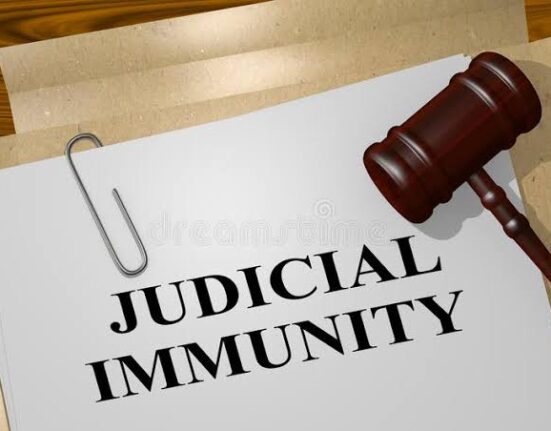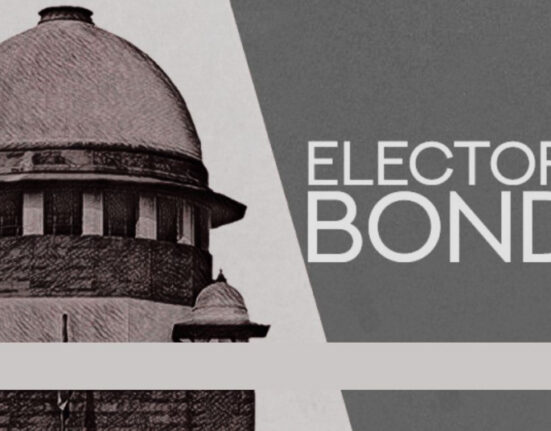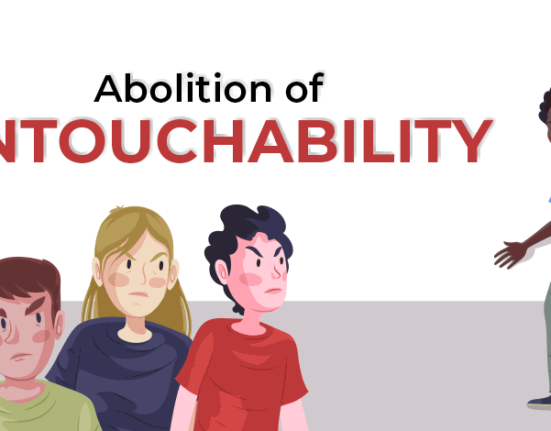Abhishek Parmar, a 4th year law student at Jagran Lakecity University, has written this article explaining about Right to life- Meaning & Evolution in Indian
INTRODUCTION
Equality and freedom are the two most important rights in a democracy. It is not possible to think of one without considering the other. Freedom is defined as freedom of thought, expression and action. However, this does not mean that one is free to do what he wants or likes. If this is allowed, many people will not be able to enjoy their freedom. Therefore, freedom is defined as a way in which everyone will enjoy their freedom without threatening the freedom of others or endangering the state of public orders.
Right to life and personal liberty
The most important rights in freedom are the right to life and personal liberty. Except for the procedures established by law, no citizen shall be deprived of his life. Similarly, no one can be deprived of personal liberty. This means that no one can be arrested without being informed of the reason for the arrest. If arrested, then the person has the right to defend himself by a lawyer of his choice. In addition, the police must take the person to the nearest magistrate within 24 hours.
The magistrate will decide whether the arrest is reasonable or not. This right is not only limited to guarantees not to deprive a person of life, but also has a wider scope of application. Several SC decisions have expanded the scope of this right. The first and most important right of all human beings and living beings is the right to life. All other rights and responsibilities depend entirely on this right.
The right to life and personal liberty guaranteed in Article 21 of the Constitution of India stipulates: Protection of life and personal liberty: No one may be deprived of life or personal liberty unless it is done in accordance with procedures established by law. The SC extended this negative right in two ways. First, any law that affects personal liberty must be reasonable, equitable, and just. Second, the court recognizes some unspoken freedoms implicit in Article 21 and has been accepted as the most precious and appreciated basic human right.
The rights in the Indian Constitution stipulate that this right also includes the right to enjoy human dignity and not be exploited. The court held that the right to housing and the right to livelihood are also included in the right to life, because no one can live without the means of subsistence, that is, the means of subsistence. The Charter of the United Nations (1945) also began by reaffirming the “conviction of fundamental human rights, human dignity and value, equal rights for men and women, and nations”. The US human rights conventions also give the arbitrary denial of human life.
EVOLUTION AND DEVELOPMENT
“Everyone has the right to life, freedom and individual safety”. The right to life is undeniably the most basic of all rights. All other rights add quality to the life in question and depend on the pre-existence of life itself to be effective. Since human rights can only be attributed to living things, people may expect the right to life itself to be the first in a sense, because without it, no other rights would have any value or utility. If Article 21 is interpreted in its original meaning, there will be no fundamental rights worth mentioning.
Article 21 of the Indian Constitution of 1950 stipulates that “No one shall be deprived of life or personal freedom except in accordance with the procedures established by law.” The “life” in Art. 21 of the Const. is not simply a physical act of living. It doesn’t just mean the existence of animals or continuous work throughout their lives. It has a broader meaning, including the right to live with dignity, the right to live, the right to health, and the right to clean air.
The right to life is the foundation of our own existence. Without the right to life, we cannot live as human beings, including all aspects of life that make human life meaningful, complete and worth living. This is the only clause in the Constitution that has received the most extensive interpretation. Under the protection of Article 21, many rights receive shelter, growth and food. Therefore, the basic needs, minimums and essential and unavoidable basic requirements of a person are the central concepts of the right to life.
In Kharak Singh v. Uttar Pradesh[1], the Supreme Court cited and ruled:
The term “life” used here does not only mean the existence of animals. The suppression of its deprivation extends to all limbs and functions that enjoy life. The clause also prohibits the use of amputation or eye removal to mutilate the body, or destroy any other organs of the body, through which the soul communicates with the outside world.
Right To Live with Human Dignity
In Maneka Gandhi v. Union of India[2], the Supreme Court gave Art. 21 a new dimension. They also argue that the right to life is not only a physical right, but also includes the right to live a dignified life within its scope. The court is in Bandhua Mukti Morcha v. Union of India[3] represent Art. 21 as the core of basic rights, the court has broadened their interpretation. Bhagwati J. Observed:
“This is the basic right of each person in this country… to live a life of dignity and without exploitation. The right to live a life of human dignity contained in Article 21 is inspired by the “Direct Principles of State Policy.”, Especially Article 39(e) and (f) and Article 41 and 42, at the very least, it must include protection of the health and strength of workers, men and women, protection of minor children from abuse, and protection of children’s health Opportunities and facilities for development under conditions of ways and freedom. As well as dignity, educational facilities, fair and humane working conditions and maternity relief.
“These are the minimum requirements for a person to live with dignity, any country, central government or any state government has no right to take any measures that deprive a person of these basic element of rights.”
Right To Livelihood
First, the Supreme Court considers the right to life in art. 21 does not include the right to earn a living. In Re Sant Ram[4],presented before Maneka Gandhi case, the Supreme Court ruled that the right to life is not included in the term “life” in Article 21. The court said:
“In a limited sense, the right to life will be included in the freedoms listed in Article 19 and even Article 16. But the language of Article 21 cannot support the argument that the term’life’ in Article 21 also includes’livelihood”.
But then the view changed. According to the broad definition of the term “life” in Article 21, the court even argued in Board of Trustees of the Port of Bombay v. Dilipkumar Raghavendranath Nandkarni[5]case that the “right to life” define in Article 21 includes the “right to livelihood”. Olga Telis v. Supreme Court Mumbai Municipal Corporation[6], commonly known as the “Pavement Dwellers Case”, the five judges of the court imply that the “right to livelihood” is based on the “right to life”, because no one cannot live a life, that is, without livelihood.
Right To Shelter
In order to defend the importance of enjoying a decent environment and the right to reasonable accommodation, in Shantistar Builders v. Narayan Khimalal Totame[7]case, the court ruled that:
“The right to life will include the right to food, clothing, a decent environment, and reasonable living conditions. And must be consider the difference between the needs of animals and humans for shelters”.
“Shelter for humans cannot protect life and extremities. But it will give opportunity to grow physically, mentally, and intelligently, therefore, safe and decent shelters, clean environment and decent structures, enough light, and can be easily accessed into pure air, water, electricity, hygiene and roads, etc. Therefore, shelter rights are not intended to be just the roof above a head, but they are better to live and needed to develop as human beings.
No Right to Die
The Bombay High Court first considered this issue in Maharashtra v. Maruti Sripati Dubal. In this case, the Court ruled that the right to life guaranteed by Art. 21 includes the right to death. The Honorable Supreme Court rejected Article 309 of the IPC, which stipulates that the penalty for attempted suicide is unconstitutional.
In P. Rathinam v. Union of India[8], the two judges of the Supreme Court, learned about the relationship/contradiction between I.P.C. Sec. 309. And Article 21. The court upheld the verdict of the Bombay HC in the Maruti Sripati Dubal case that the right to life is embodied in Art. 21 and the right not to lead a forced life that is unfavorable or unpleasant for you.
The court contended that the word life in Art. 21 means the right to live in human dignity, and it doesn’t just mean continuing the hard work. Therefore, the court concluded that Article 21 has the right to survive. It can be said that the right to live without being forced to follow their tracks. The court further stressed that “the suicide attempt is actually a prison cry rather than a penalty.”
In Gian Kaur v. state of Punjab[9], court judges reviewed Rathinam’s ruling. The question facing the court is that if the main crime of attempted suicide is invalidated by a violation of article 21, then how to incite it under Article 21. It was argued that the “right to death “was included in Article 21 (Rathinam judgment) and Sec. 309 has been declared unconstitutional, and anyone who incites others to commit suicide is only assisting in the implementation of their basic rights under article 21. In the aforementioned case, the court rejected the decision and put an end to the controversy and ruled that Art.21 is a clause that guarantees life and personal liberty, and whoever imagines it cannot be extinguished. Life` is interpreted as included in the protection of life. In addition, court observed:
“‘The right to life’ is ordinary right contained in Art. 21, but suicide is the unusual termination or extinction of life, so it is incompatible and unreliable with the concept of the right to life”
Euthanasia And Right To Life
Euthanasia is the termination of the life of a person with a terminal illness or in a permanent vegetative state. In Gian Kaur v. State of Punjab, the Supreme Court distinguished between euthanasia and attempted suicide. The court held that death caused by the termination of natural life is certain and imminent, and the natural death process has already begun. It is not about situations of extinction of lives, but to accelerate the end of the natural death process that has already begun. The court further held that this may fall within the scope of the right to enjoy human dignity until the end of natural life. This can include the right of dying people to die with dignity when their lives are about to die. This cannot be equated with the right to shorten natural life due to unnatural death.
CONCEPT OF DUE PROCESS & PROCEDURE ESTABLISHED BY LAW IN INDIA IN COMPARISON WITH US
According to Art. 21, there are two essential points to be discussed about-
(1) Procedure established by law; and
(2) Due process of law.
Procedure Established by law:
(This Doctrine is originated under British Constitution and India follows it.) According to this concept, anyone can be deprived of any rights by law, but there is only one situation in which the rights of the people are taken away. This condition lies in the name itself. This is a legal system and it means proper procedures. In this principle there is a major flaw that it does not assess whether the laws enacted by parliament are fair, just and reasonable.
The procedure stipulated by law establishes that the law officially promulgated is effective, even if it is different from the principles of justice and equity. Strictly comply with the procedures established by law, and these procedures may increase the risk of endangering personal life and personal liberty due to unjust laws enacted by legislative authorities. Therefore, the procedures provided by the law protect individuals from arbitrary actions taken by the executive branch alone.
Due process of law:
(The doctrine originated in the Constitution of the United States) – This doctrine not only verifies if there are laws that deprive people of their freedom of life, but it also verifies if the laws made are fair, just and not arbitrary. If the Supreme Court knows that any law is unfair, it will declare it invalid. This doctrine leads to a fairer treatment of individual rights. It grants the judiciary the right to judge the basic equity, justice and freedom of any legislation. Therefore, due process protects people from arbitrary actions by the executive and legislative bodies. In India, the term “due process” is not mentioned.
This concept is based on three main axes: justice, fairness, and conscience. However, in Maneka Gandhi v. Union of India, the SC dismissed the case of A.K. Gopalan[10], and held that the procedure established by the law means a procedure that is ultimately reasonable, fair and just. The decision made avoids the simple and clear procedural meaning established by the law, and for the first time introduced the great principle of due process.
In the Sunil Batra v. Delhi Administration case[11], Judge Krishna Iyer observed: “Our Constitution does not have a “due process clause” like the Eighth Amendment (of the U.S. Constitution), but in this branch of law, After the Cooper case and Maneka Gandhi. The result is the same.
CONCLUSION
The scope of the right to life and individual freedom is very wide and will only increase over time. People are becoming more and more aware that they have the right to control all aspects of a person’s life, so this will help improve their quality of life. This right is described by the Supreme Court as the “heart and soul” of the Indian Constitution, and it does prove it because it represents the basic necessities of human life.
RECOMMENDATION
The Indian judiciary has given a good explanation of the rights to life and personal liberty stipulated in article 21 of the Constitution. The SC not only clarified the human natures of Article 21, but also recognized certain procedures to implement them. This makes the legal rules great and meaningful. Each interpretation or procedure related to Article 21 has the specific objective of achieving the justice mentioned in the preamble through the integral development of citizens. Each explanation attempts to meet the basic needs of humanity while maintaining human dignity.
It is difficult to find noble and solemn examples and interpretations of the concepts of the right to life and personal liberty in India by the Supreme Court of India in other parts of the world. The Indian concept does not limit the right to life and individual liberty to the physical entity of a person. It means seeking the full development of people and making justice triumph.
[1] Kharak Singh Versus The State Of U P & Others – Lnind 1962 Sc 436 Air 1963 Sc 1295[1964
[2] Mrs. Maneka Gandhi V. Union Of India And Another – Lnind 1978 Sc 25 (1978) 1 Scc 248
[3] Bandhua Mukti Morcha Versus Union Of India And Others – Lnind 1983 Sc 564 (1984)
[4] Sant Ram Versus Re – Lnind 1960 Sc 113 Air 1960 Sc 932[1961].
[5] The Board Of Trustees Of The Port Of Bombay Versus Dilipkumar Raghavendranath Nadkarni And Others – Lnind 1982 Sc 167.
[6] Olga Tellis And Others Versus Bombay Municipal Corporation And Others – Lnind 1985 Sc 215 (1985).
[7] Shantistar Builders Versus Narayan Khimalal Gotame & Others Etc – Lnind 1995 Sc 1144.
[8] P. Rathinam / Nabhusan Patnaik V. Union Of India And Another – Lnind 1994 Sc 1533
[9] Smt.Gian Kaur And Others Versus The State Of Punjab And Others – LNIND 1996 SC 653
[10] A K Gopalan In Re Versus The State Of Madras Union Of India – Lnind 1950 Sc 22
[11]Sunil Batra Etc. Vs. Delhi Administration And Ors. Etc. Lnind 1978 Sc 215
![]()







Leave feedback about this